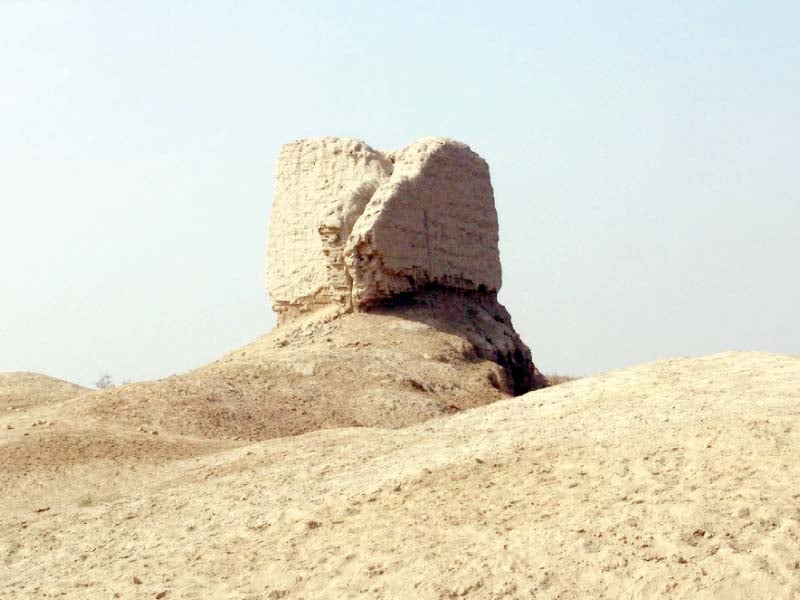
DERA GHAZI KHAN: The ruins of Mound Dillu Roy do not fail to fascinate anyone who visits. Apart from the rich culture and heritage that is preserved at the site, the threads of myths woven around the Buddhist marvel, offer multiple narratives and accounts of the history of the place.
Situated on Jampur-Dajal Road, around five kilometres from Jampur, Mound Dillu Roy, commonly known as Dillu Roy Theatre, is one of the oldest settlements known to mankind. It is an ancient site from Buddhist period which is located in Dera Ghazi Khan District.
Punjab set aside Rs100m for heritage conservation
Study and ancient objects found from the old city site reveal that it was occupied by the Buddhists in the Scytho-Parthian period dating back to the 1st century BC.
Most historians believe the site remained buried underneath thousands of years of dust, sand and stone until it was rediscovered in 1858 by archaeologists. They say the ancient city is named after a Brahman prince called Dillu Roy. The city is situated on a vast area but the locals have started cultivating crops on major part of the land, thus encroaching upon the heritage site.
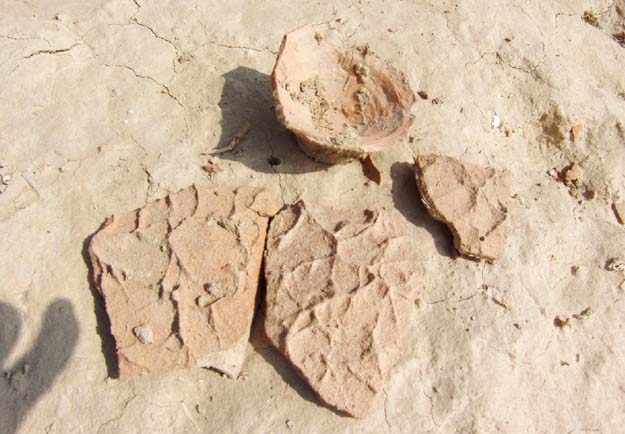
Subsequent studies of the site and objects exhibit that Mound Dillu Roy was a sophisticated settlement of traders, fishermen and farmers and had complex religious cults.
The ancient city resembles that of Moenjo Daro and Harappa in Sindh. According to historians, Dillu Roy city was built on two storeys: The upper part is situated above the land which is covered in sand while the lower part is buried underground.
When the archaeologists dug the site, the plan of houses and streets was visible. Some of the walls with traces of mud plaster stand as high as 12 feet and at certain places, complete plan of rooms, streets and shops is traceable. Besides, a wheat warehouse was also unearthed during excavation.
Some people believe that the city consisted of four bastions which were used to guard the city and its people. However, with the passage of time, the bastions were demolished and now only their traces were left.
The surface finds from Dillu Roy included a wide range of plain, painted stamped and incised pottery with applique decoration. A few pottery moulds with flower and leaf motifs have also been found. In addition, knives and sharp edged tools were also recovered from the spot during excavation.

Other finds included sling balls, dabbers, oil lamps, spoon handles, terracotta wheels and animal figurines. The specimens of bottle-neck sprinkles with curved flange and conical knob at the top are quite similar in all respects to the types recovered from such sites in Banbhore, Taxila and Pitalkora (India) and they may be dated to 1st century BC to 2nd century AC. The moulding representation of acanthus foliage, lotus petals and sunflowers carved in the most naturalistic style and burnt bricks decorated with flower and geometrical designs are all the characteristic representation of Buddhist culture. Moreover, a terracotta object having circular umbrellas seems to represent a miniature Stupa.
While speaking to The Express Tribune, Archaeology Department Sub-Divisional Officer Malik Ghulam Muhammad said, “The government has decided to preserve Mound Dillu Roy and it has released a sum of Rs10 million for the purpose.” He added, “The excavation work has commenced and the objects recovered from the site will be preserved at Harappa Museum.”
He maintained that the actual area of the historic site would also be included in the official record. He said the funds allocated for the project would be utilised to build a boundary wall around the ancient site and a guard post to keep it safe from outside intervention.
“The department will now prepare detailed estimates which will be sent to Punjab archaeology department for technical sanction following which the scheme would enter the tender process,” he revealed. He elaborated that a full time site attendant already stands posted by federal government to guard the site.
When contacted, Member National Assembly Sardar Jaffar Khan Leghari told The Express Tribune, “The site contains history of an old civilisation which should be preserved.” He added, “The government should establish a museum in the district and preserve all objects recovered from the ancient site.”
The MNA maintained earlier, different objects that were recovered by archaeologists were stolen. He said antiques related to Gandhara civilization were also found from the region.
Dur Muhammad Khan, a retired attendant, who remained posted at the site for 34 years, told The Express Tribune, “The government took custody of the site in 1955. At that time silver and gold coins, jewellery, swords, arrows and utensils were found from the area which were unique in today’s world.” Dur said skulls have also been recovered from the area which suggests that the people living in that era were tall and had strong build.
He pointed out, “I and my forefathers have been protecting the site for years and have foiled several attempts by armed people, who wanted to dig the site and steal items.”
Art brings Lahore's Walled City to life
Key dates
• In 1858, the then deputy commissioner ordered excavation of the site.
• In 1876, assistant administrator of the region Munshi Hukum Chand wrote a book on Mound Dillu Roy titled ‘Tawareekh of Dera Ghazi Khan’.
• In 1955, the archaeology department deputed an attendant for the first time to guard the site premises.
• In February 1964, the site was declared as a protected heritage.
• In 2010, a survey by revenue department revealed Mound Dillu Roy is situated on 80 acres of land.
Published in The Express Tribune, July 4th, 2017.





































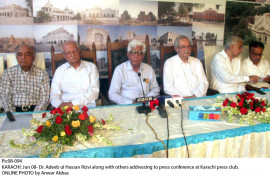
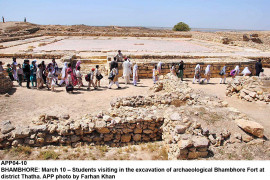
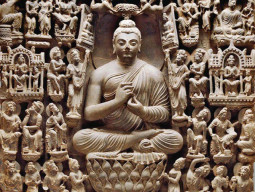





















COMMENTS
Comments are moderated and generally will be posted if they are on-topic and not abusive.
For more information, please see our Comments FAQ